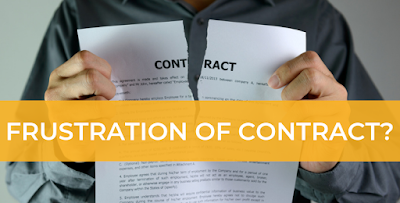A discussion on the potential liability imposed by the doctrine of vicarious liability on employers under tort law.
This essay will argue that, as a compromise position, making the employer vicariously liability for the tort of the employee is justifiable in some circumstances; however, it will be shown that the current approach of the courts in imposing such liability is doctrinally flawed. For this reason it will be argued that the vicarious liability should be placed on a statutory footing. This essay will first consider the liability of the employer when it is the primary tortfeasor, secondly it will consider the test applied by the court when it imposes vicarious liability and finally it will consider possible reform.
The liability of the employer when it is the primary tortfeasor
This essay will not consider in detail the burden placed on employers when the employer is the primary tortfeasor.1 This is because in such circumstances the ordinary common law principles of negligence apply – in particular the requirement that any breach of duty by the employer has a causal link to the harm caused to the claimant.2 This is inherently fair.
The vicarious liability of the employer
The two-stage test for making the employer vicariously liable for a tort of the employee laid out by Lord Nicholls in Majrowski v Guy’s and St Thomas’s NHS Trust3 requires refinement if it is be legitimate. These two stages are analysed in turn below.
i) An ‘Employer-Employee Relationship’
Whilst there is nothing inherently flawed in the tests of whether there is an employer-employee relationship – that there must be sufficient control by a potential employer of his employee and that there must be sufficient integration of the said employee into the business –4 it is submitted that the practical application of the modern ‘economic reality’5 approach to these tests is not fair to employers. This is for two reasons: Firstly, the courts have unfairly used a results driven approach. This approach of the courts can be seen in Hawley v Luminar Leisure Ltd6 where it was held that a nightclub operator was vicariously liable for the acts of a doormen who was himself actually contractually employed by an agency called ASE. Companies using independent contractors would not prima facie be liable for the acts of the contractor;7 but it is crucial to note that at the time of the court hearing, ASE had gone into liquidation and so it would not be able to meet any claim for damages. It is submitted therefore that this was a key concern of Hallet LJ in Hawley when imposing sole vicarious liability on the nightclub operator. This argument is especially feasible when one considers Viasystems Ltd v Thermal Transfers Ltd, where May LJ held that it was possible for more than one set of ‘employers’ to be vicariously liable.8 But for ASE going into liquidation, there is no apparent policy reason why it should not have been liable to some extent along with the nightclub operator. The current approach to the law is therefore unfair as it can disproportionately impose vicarious liability on an employer.
Secondly, as seen in the case of E v English Province of Our Lady of Charity,9 it is at least arguable that the concept of an ‘employee’ has been excessively widened by the courts in its efforts to do justice. In this case, which concerned sexual abuse within the Catholic Church, the court was willing to find an employer-employee relationship exists, despite there being ‘no real element of control’.10 It is not denied that the finding of the employer-employee relationship allowed for justice to be done in this case, but as Morgan comments,11 this expansion of the employer-employee definition potentially undermines commercial certainty for many employers when they are trying to determine what they might be liable for.
ii) The ‘closely connected’ test
The ways in which the ‘closely connected’ test – which, under Lister v Hedley Hall, requires that the actions of the employee be so ‘closely connected’ with their employment that it is justifiable to impose vicarious liability –12 has been applied by the courts is unfair on employers in two key ways: Firstly, the application of the test is unfair because it is too vague to enable employers to know how to regulate their employees. One of the justifications for vicarious liability given by Lord Nicholls in Majrowski is that it encourages employers ‘to maintain standards of good practice by their employees’.13 It must be an implicit requirement of this reasoning that employers reasonably know what standards they should encourage their employees to attain. Yet this is not possible because the concept of ‘close connection’ is excessively vague. This is especially seen in Lister where the judges were not consistent in its definition. On the one had Lord Steyn argues that the test is whether the actions of the employee were so ‘closely connected with his employment that it would be fair and just’ to impose vicarious liability’;14 in contrast Lord Hobhouse would require that the ‘employer has assumed a relationship to the plaintiff’.15 The former would appear to be appealing to general notions of fairness and the latter to be looking for a direct employer-plaintiff relationship, whether finding such a relationship be fair or not. These are fundamentally different tests that do not provide fair guidance for employers, as the judges themselves admitted in Dubai Aluminium16.
Secondly, and linked with the diverging definitions of ‘closely connected’, the test is unfair because doctrinally it is based on the principles of fairness, but the application of the ‘closely connected’ test in practice tends towards looking for a causal link between the tortious act and the actions taken by the employer. This is best seen in Lord Hobhouse’s statement of the close connection test where the focus of the test is on the employer-plaintiff relationship.17 This factor is irrelevant because if the courts were to truly adopt the ‘employee tort’ analysis, they would look for a tortious act by a person in an employer-employee relationship done during the course of their employment. Whilst there is a need to define whether the tortious act was carried out by the employee during their work, looking for a close connection is misleading because in cases such E it is hard to see in reality how the act of child sex abuse was ‘closely connected’ with the defendants role as a priest.18 There was an abuse of position, but this was nothing to do with his role as a priest per se. The policy reason for imposing vicarious liability, such as ‘those responsible for...[economic] activities should be liable to persons suffering loss from wrongs committed in the conduct of the enterprise’19 (the enterprise risk justification) should be adhered too, otherwise employers might be unfairly saddled with vicarious liability in cases.20 As Liebeck and Langleben argue, 21 it is far more justifiable to impose liability when there is an element of blameworthiness on the part of the employer; where possible it must be fairer to adopt this form of liability.
Possible Reform
None of the above arguments are meant to contest that the underlying principles of vicarious liability, particularly the enterprise risk justification22 and the idea of distributing ‘financial loss arising from [tortious wrongs]...more widely’ are not fair. This is because employers will often have insurance which can protect them from a large vicarious liability claim. The fundamental issue though is that these arguments do not apply solely to the employment context. Lord Nicholls accepted in Majrowski that these principles apply equally to common law torts and the statutory tort of harassment under s3(1) Prevention of Harassment Act 1997,23 and whilst he was justified in arguing that this does not open the floodgates of liability for employers for the above mentioned reasons, applying the same logic should mean that other areas apart from employment should also have vicarious liability applied to them.24
Furthermore, as cases such as E v English Province of Our Lady of Charity and Maga demonstrate,25 there are issues of ensuring societal justice at issue which justify the continued existence of vicarious liability. To account for this, Giliker would propose focussing on the nature of the duties rather than the course of employment, 26 but it is submitted that this is of limited use because if these underlying justifications for vicarious liability are accepted, then the current position of the law of tort would require radical reform because these justifications would override foreseeability requirement of tortious liability.27 As Baroness Hale states in Majrowski, judges are ‘not policy-makers and legislators’,28 but surely they are starting to err towards being so after the above cases. For that reason, legislation from parliament would be most appropriate.
Conclusion
It has been demonstrated that the current judicial approach to vicarious liability has a sound underlying aim. Issues arise, however, both in how this test is applied doctrinally and also the fact that it is not applied beyond the employment context. For this reason it should be given a statutory footing to give it democratic legitimacy.
1 The term ‘primary tortfeasor’ is used to describe the situation where the employer is the party who actively has a duty to the claimant, breaches that duty and as a result of that breach causes damage to the claimant.
2 As seen in, inter alia, Donoghue v Stevenson [1932] AC 562.
3 [2006] UKHL 34 at [9].
4 Ready Mixed Concrete (South East) Ltd v Minister of Pensions and National Insurance [1968] 2 WLR 775 at 515.
5 As n4 above, at 521 per Mackenna J.
6 [2006] EWCA Civ 18.
7 Mersey Docks Harbour Board v Coggins and Griffith [1947] AC 1; it should be noted that this position is merely the starting point and is subject to the company using the services of the contractor being the ‘temporary deemed employer’.
8 Viasystems (Tyneside) Ltd v Thermal Transfer (Northern) Ltd [2005] EWCA Civ 1151 at [3]-[5].
9 [2011] EWHC 2871 See also Maga v Archbishop of Birmingham [2010] 1 WLR 1441.
10 At [35] per Macduff J.
11 Morgan, Revising vicarious liability: a commercial perspective, [2012] 2(May) LMCLQ 175.
12 at [28].
13 Majrowski at [9].
14 At [28].
15 At [54].
16 Dubai Aluminium Co ltd v Salaam [2003] 2 AC 366 at [25].
17 ibid.
18 The same argument could be extended to the teacher in Lister.
19 Majrowski v Guy’s and St Thomas’s NHS Trust [2006] UKHL 34 at [9].
20 See further Mattis v Pollock [2003] 1 LR 2158.
21 Liebeck and Langleben, Blameless...but liable, [2007] 151(20) SJ 650.
22 As n19 above.
23 at [23].
24 It is accepted that Majrowski widened the application of vicarious liability and that this is potentially unfair as it allows the claimant to circumvent many of the requirements for establishing tortious liability. This is justifiable due to the reasons given in Majrowski for imposing vicarious liability. See further: Giliker, The ongoing march of vicarious liability, [2006] 65(3) CLJ 489, p491.
25 Maga v Birmingham Roman Catholic Archdiocese Trustees [2010] EWCA Civ 356.
26 Giliker, Lister revisited: Vicarious liability, distributive justice and the course of employment, [2010] 126(Oct) LQR 521, p524.
27Eg As required by Donoghue v Stevenson [1932] AC 562.
28 Majrowski at [74]s.
Law Tutors Online, UK Law Tutor, UK Law Notes, Manchester Law Tutor, Birmingham Law Tutor, Nottingham Law Tutor, Oxford Law Tutor, Cambridge Law Tutor, New York Law Tutor, Sydney Law Tutor, Singapore Law Tutor, Hong Kong Law Tutor, London Tutors, Top Tutors Online and London Law Tutor are trading names of London Law Tutor Ltd. which is a company registered in England and Wales. Company Registration Number: 08253481. VAT Registration Number: 160291824 Registered Data Controller: ZA236376 Registered office: Berkeley Square House, Berkeley Square, London, UK W1J 6BD. All Rights Reserved. Copyright © 2012-2024.


